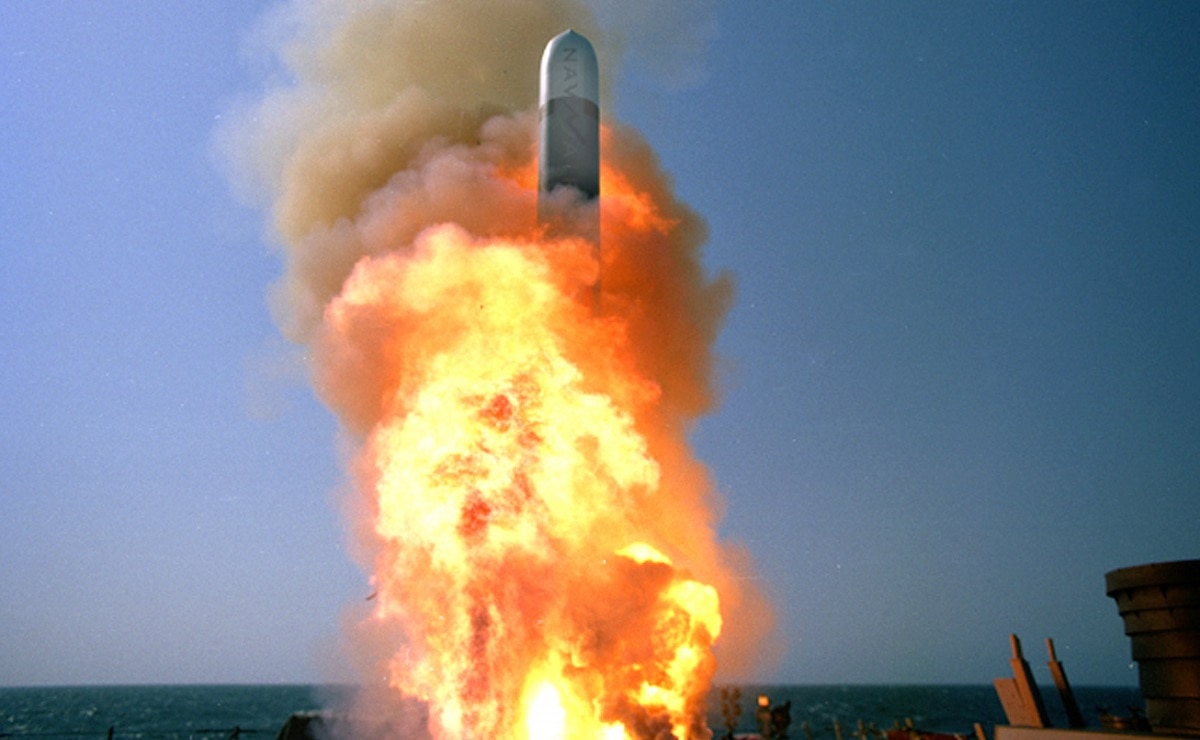Tomahawk cruise missile: The upgrades continue: Ships moving at sea can be difficult to target, especially if surface weapons are the only ones available.
This is a predicament the U.S. Navy has been working to address for years through the development of the Tactical Tomahawk, a modified variant of the Tomahawk cruise missile designed to hit moving ships at sea.
As a combat-tested cruise missile able to travel as far as 900 nautical miles, the ship- and submarine-launched Tomahawk has been modernized many times over the course of recent decades.
Tactical Tomahawk: What We Know
The Tomahawk is often the first weapon to fire in war, as it is both extremely precise and long-range. The current Block IV Tomahawk has a two-way data link to adjust to new target details in flight, and it features an almost drone-like ability to loiter above targets and send back specifics. The weapon has proven critical in attacking command and control targets, infrastructure, and fixed locations such as enemy command centers, equipment, and force concentrations. The Tomahawk in recent years has primarily been used against fixed targets, but the latest Block V Tactical Tomahawk integrates a new generation of technical advances that allow the weapon to hit moving ships at sea while flying parallel to the ocean surface.
By traveling at lower altitudes, Tomahawk cruise missiles are engineered to elude enemy ship radar systems. The Block V Tactical Tomahawk is the most modern, cutting-edge variant. It introduces course-correcting guidance technology and can adjust its trajectory quickly to strike moving targets.
The Tactical Tomahawk has been in development for many years as a key strategic Navy effort to expand the attack envelope for ship commanders. Therefore, a maneuvering Tomahawk weapon such as Block V can be considered a significant breakthrough — it introduces new ways for the Navy to attack moving enemy ships at long ranges with precision targeting.
Certainly fighter jets, laser spotting, platforms capable of firing air-launched precision weapons such as air-to-surface missiles, and emerging systems such as the Long Range Anti-Ship Missile introduce possibilities for ship commanders hoping to attack moving enemy targets at sea.
A Tactical Tomahawk, however, brings several unprecedented advantages. Tomahawks can at times be difficult to defend against. A ship-fired Tomahawk able to hit moving ships from the surface would of course eliminate the risks associated with attacking from the air. It would also lock in previously unprecedented stand-off ranges.
Given these variables, it appears the Tactical Tomahawk aligns with the Navy’s Distributed Maritime Operations (DMO) strategy, as it enables networked, precision attacks from disaggregated formations less vulnerable to enemy fire.
This aligns with the core concept of DMO. The intent is to securely network ships, drones, aircraft, and other platforms across great distances to increase an operational envelope; improve survivability by decreasing exposure to incoming fire; and optimize technological advances afforded by new precision-guidance, manned-unmanned teaming, and networking technologies.
Kris Osborn is the Military Affairs Editor of 19FortyFive and President of Warrior Maven – Center for Military Modernization. Osborn previously served at the Pentagon as a Highly Qualified Expert with the Office of the Assistant Secretary of the Army—Acquisition, Logistics & Technology. Osborn has also worked as an anchor and on-air military specialist at national TV networks. He has appeared as a guest military expert on Fox News, MSNBC, The Military Channel, and The History Channel. He also has a Masters Degree in Comparative Literature from Columbia University.

